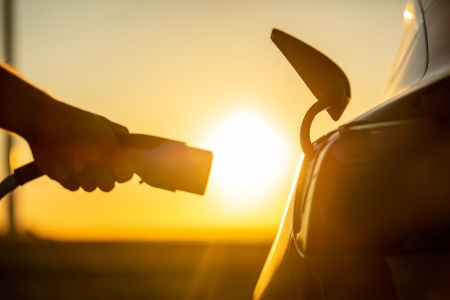
Electric cars as buffer storage for solar power
Infineon Technologies AG (FSE: IFX / OTCQX: IFNNY) and Delta Electronics, a Taiwan-based global leading provider of power and energy management solutions, have developed a three-in-one-system that integrates solar, energy storage and charging of electric vehicles. Thanks to bidirectional inverters, the electric car is not only charged, but can also be used as a buffer storage or as household emergency backup power. More and more cars are equipped for this. Looking ahead, bidirectional energy flows coulf also be used to realize new vehicle-to-home (V2H) and vehicle-to-grid (V2G) solutions.
“To make a sustainable contribution to decarbonization, we must think electromobility holistically: from green power generation to a stable, efficient grid infrastructure to storage and consumption,” says Peter Wawer, head of Infineon’s Industrial Power Control division. „With our solutions for bidirectional charging, the electric car can be charged inexpensively with solar power at home and also serves as a buffer storage.”
A single-family home can consume an average of 10-15 kWh of energy per day. A fully charged car battery with a capacity of 30 to 100 kWh could therefore theoretically bridge a few days as an emergency power solution. Homeowners thus secure inexpensive electricity as well as more independence in power supply.
The new system provided by Delta allows a maximum continuous current of 34 A and achieves peak efficiencies of more than 97.5 percent. To increase power density, energy-efficient power semiconductors made of silicon carbide (SiC) from Infineon are used. Compared to silicon-based semiconductors, the compound material SiC reduces energy losses when converting current by around half. The size of charging stations can also be reduced by about 30 percent. With SiC, photovoltaic systems become more powerful, charging times at fast-charging stations and wallboxes are shorter, and the range of electric cars five to ten percent higher.
Information Source: Read More–>
ENERGY | ELECTRIC POWER | NATURAL GAS | OIL | CLIMATE | RENEWABLE | WIND | TRANSITION | LPG | OIL & GAS | SOLAR | ELECTRIC | BIOMASS | SUSTAINABILITY | OIL PRICE |


